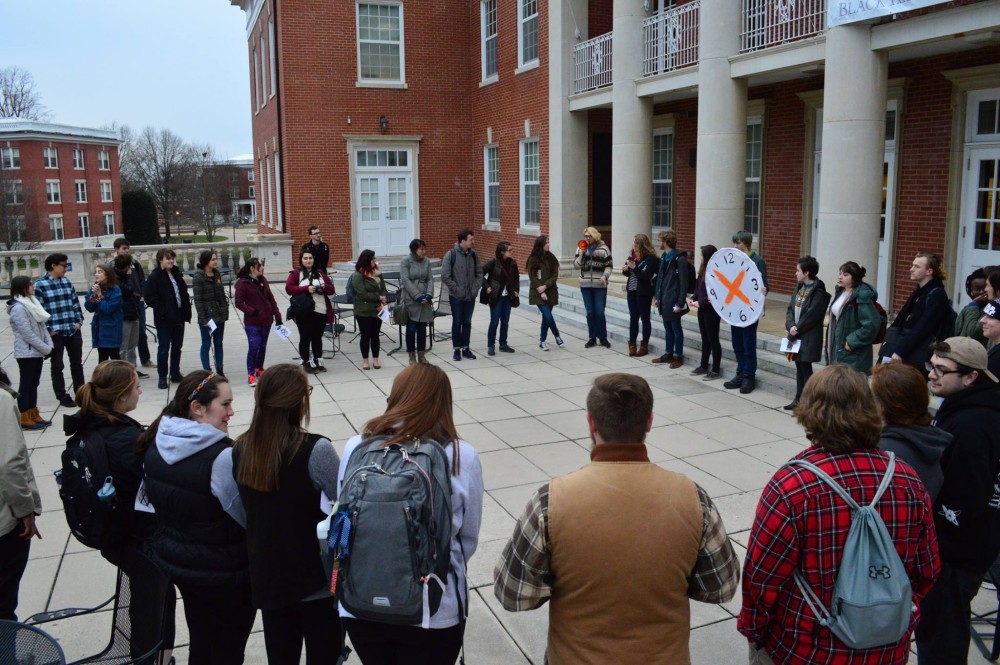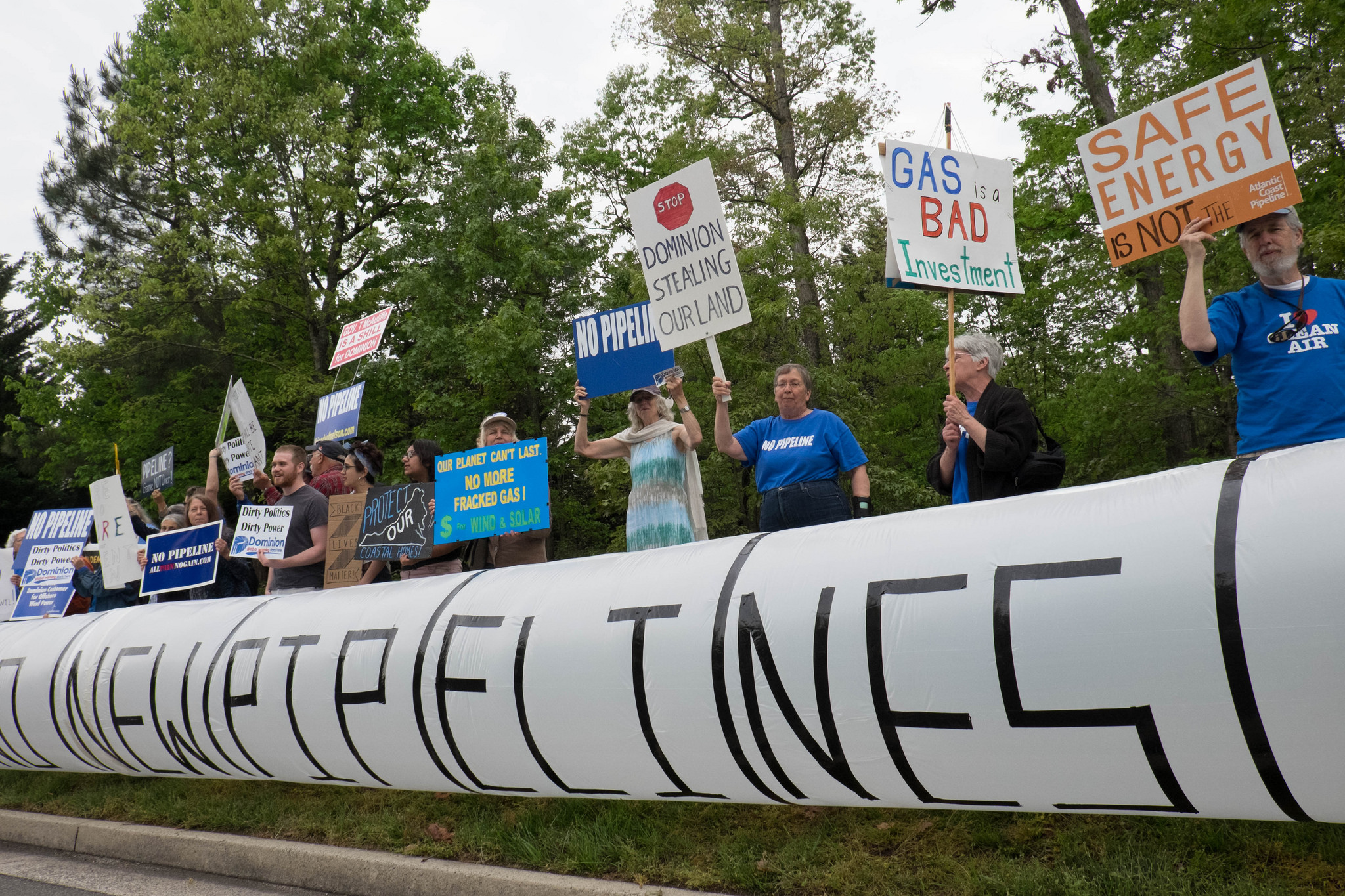As summer winds down, the battle over Virginia’s long-term solution for coal ash disposal is heating back up. This summer saw several significant events and improvements in the fight against reckless coal ash disposal in Virginia.
First, the Virginia Sierra Club and Southern Environmental Law Center teamed up in court to sue Dominion for violations of the Clean Water Act at its leaking Chesapeake coal ash ponds. The trial spanned 4 days in Richmond, at the end of which Judge Gibney said he was inclined to agree that arsenic was in fact leaking from the Chesapeake coal ash ponds and that Dominion was in violation of the Clean Water Act, but said he was not yet sure of a solution. He plans to rule on the case within the next few months.
This summer also saw the U.S. Environmental Protection Agency close a significant loophole in its coal ash rule. Previously, if utilities managed to close their inactive coal ash ponds within three years of the issuance of the rule, they would essentially escape all federal regulation. We speculate that this is why Dominion was moving so quickly–faster than almost all other utilities in the country–to close its inactive ponds. Thankfully, thanks to a lawsuit brought by Earthjustice and others, this loophole is now removed.
We view this as a significant win. Before this update, inactive coal ash ponds that closed early were not subject to any groundwater monitoring or other post-closure care requirements–basically, they were unregulated under federal law. Under this new rule, Dominion no longer has an incentive to meet the April 2018 closure deadline and, if it does, the company will still not be able to escape the full requirements of the coal ash rule. Dominion’s inactive ponds are now subject to monitoring and corrective action; groundwater contamination at the site is subject to strict cleanup standards; and these monitoring and cleanup requirements apply for 30 years after closure. We hope that this new EPA rule will result in Dominion giving more thought to its closure plans.
Despite these victories, there is still much work to be done. The next permit fight on the table is a dewatering permit for Dominion’s Chesterfield coal ash ponds. These ponds, which sit directly next to a playground and park, hold millions of tons of coal ash. They were shown to be leaking into the James River during a study conducted by Duke University earlier this summer.
This permit process goes before the Virginia State Water Control Board on September 22nd in Richmond, Virginia for a public hearing. The hearing will begin at 9:30 am at the General Assembly Building, House Room C (9th & Broad Streets) in Richmond. This permit still has serious deficiencies–from the high temperature of the released water to impacts to the endangered Atlantic Sturgeon habitat. We need Virginians to come together and show Dominion and state regulators that we demand a closure process that will protect our drinking water for decades to come, not Dominion shareholders’ bottom line. Especially as more southeastern states agree to excavate and move their coal ash to modern, lined landfills, or decide to recycle it–creating an economic windfall out of a toxic situation–Dominion lags farther and farther behind.
I’m hopeful on this campaign, friends. This summer hundreds gathered to march in 100* heat in Richmond to call on Governor McAuliffe to move us away from a future full of fossil fuels and dirty energy. To stand with Virginians, not with Dominion. Our movement is growing in Virginia and beyond. From the beautiful blockade against the Dakota Access Pipeline, to the unprecedented deployment of renewable energy across the globe, the tide is turning. We need your help to push us there.
Keeping the pressure on Dominion
 The past few months Virginians across the state have risen up to fight Dominion’s plans for coal ash disposal into our rivers. After Dominion unveiled its disastrous plans to dispose of this waste into waterways — at allowable toxin levels far exceeding those of neighboring North Carolina — we’ve learned a lot. We’ve learned Dominion dumped 33.7 million, later *revised* to 27.5 million gallons, of untreated coal ash wastewater into Quantico Creek last May. We’ve learned the Director of our Department of Environmental Quality, David Paylor, took a trip to the Master’s Golf Tournament on Dominion’s dime; they even paid for a nice bar tab, too! And we’ve learned that Governor Terry McAuliffe is more willing to side with Dominion than with us.
The past few months Virginians across the state have risen up to fight Dominion’s plans for coal ash disposal into our rivers. After Dominion unveiled its disastrous plans to dispose of this waste into waterways — at allowable toxin levels far exceeding those of neighboring North Carolina — we’ve learned a lot. We’ve learned Dominion dumped 33.7 million, later *revised* to 27.5 million gallons, of untreated coal ash wastewater into Quantico Creek last May. We’ve learned the Director of our Department of Environmental Quality, David Paylor, took a trip to the Master’s Golf Tournament on Dominion’s dime; they even paid for a nice bar tab, too! And we’ve learned that Governor Terry McAuliffe is more willing to side with Dominion than with us.
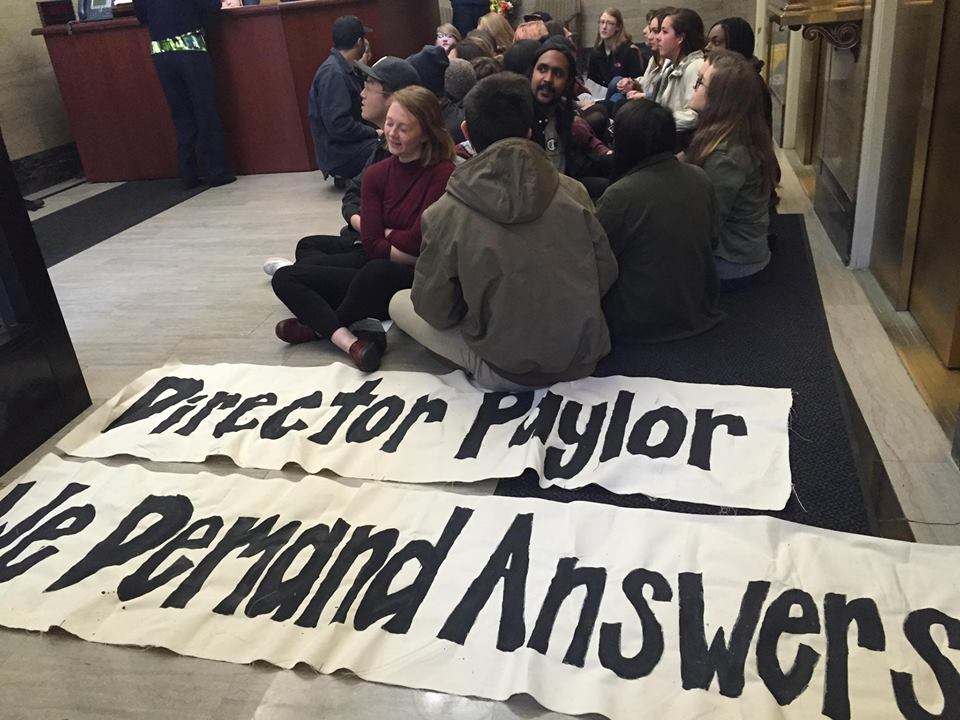
None of that has changed Virginians’ minds that this plan for toxic coal ash disposal has to stop. And it’s led to some of the most inspired resistance I’ve ever seen in Virginia. Over 600 strong marched in Richmond, students peacefully occupied the Department of Environmental Quality demanding answers, and citizens across the state are mobilizing to organize film screenings, workshops, and trainings to fight back.
I think we’ve reached a tipping point. Virginians are tired of business as usual — namely, Dominion getting its way. We’re tired of Dominion using its money to buy off our legislators. We’re tired of Dominion killing bills to promote wind and solar power. And we’re tired of Dominion pushing its dirty Atlantic Coast Pipeline down our throats.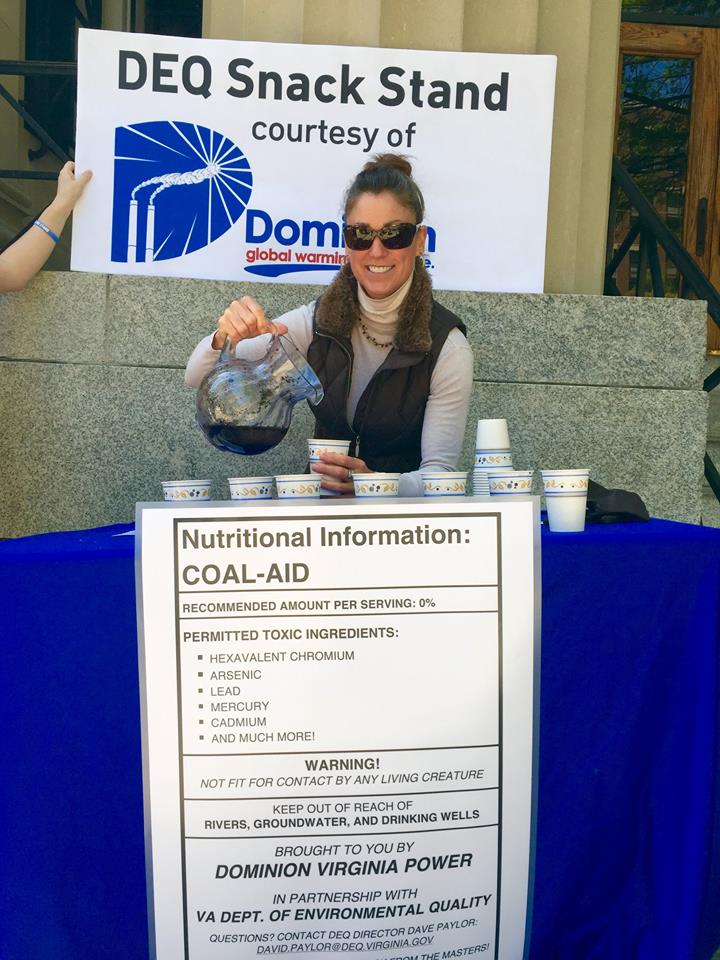
So we’re pushing back, because this fight is far from over. Potomac Riverkeeper Network and the Southern Environmental Law Center continue to challenge the legality of Dominion’s dewatering permit at the Possum Point Power Station. They’ve called on the Environmental Protection Agency to launch a criminal investigation into Dominion’s dumping in Quantico Creek last summer, and we’re working to support their call. We’re continuing to bring attention to the cozy relationship between Dominion and DEQ, and have no plans of stopping.
 Next up, DEQ will be releasing the draft permits for Dominion’s handling of the solid coal ash waste piled up in its ponds across Virginia — and we plan to fight them tooth and nail. We already know they are inadequate, because Dominion wants to leave the toxic coal ash in dated, unlined landfills right along our rivers. Instead of moving the toxic ash to modern, lined landfills like North Carolina is doing, or going ‘coal ash free’ like South Carolina, Dominion wants to let its pits leach heavy metals into our groundwater for decades to come. If they have it their way, we’ll see carcinogens such as arsenic, cadmium, mercury, and hexavalent chromium make their way into our drinking water for decades to come.
Next up, DEQ will be releasing the draft permits for Dominion’s handling of the solid coal ash waste piled up in its ponds across Virginia — and we plan to fight them tooth and nail. We already know they are inadequate, because Dominion wants to leave the toxic coal ash in dated, unlined landfills right along our rivers. Instead of moving the toxic ash to modern, lined landfills like North Carolina is doing, or going ‘coal ash free’ like South Carolina, Dominion wants to let its pits leach heavy metals into our groundwater for decades to come. If they have it their way, we’ll see carcinogens such as arsenic, cadmium, mercury, and hexavalent chromium make their way into our drinking water for decades to come.
But we have no intention of letting that happen. Together, we’ll continue to fight Dominion’s plan in the courts, in the media, and in the streets. Dominion’s a tough player. We’ve known this for years. But I don’t think Dominion has seen an uprising take off this quickly before. And I can feel we’re onto something.
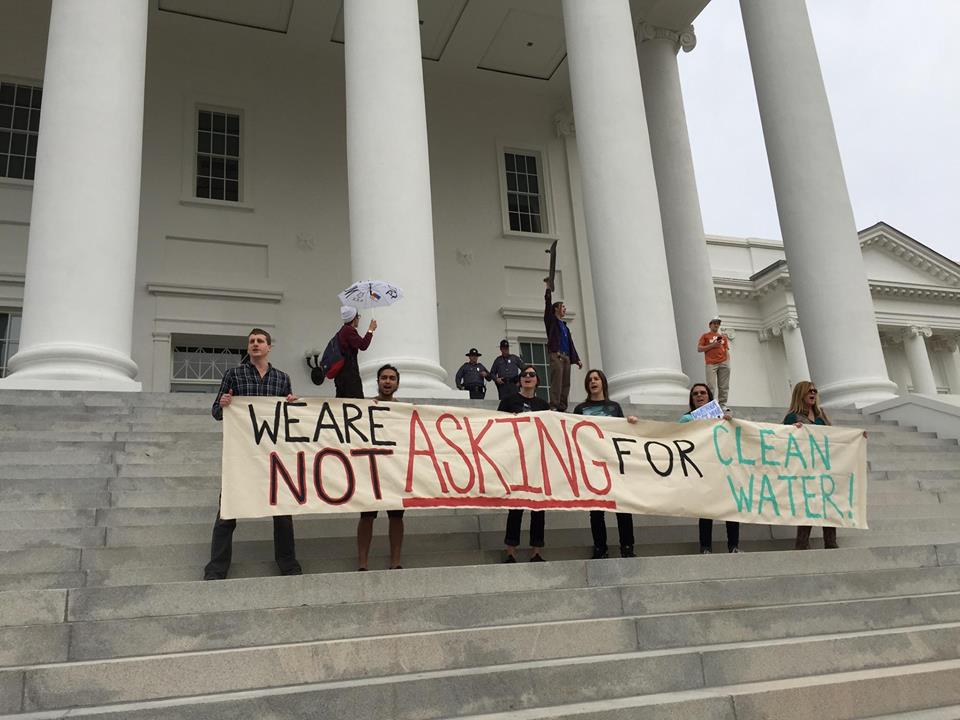
UMW Votes to Divest from Fossil Fuels in Huge Win for Student Power
Today, the Board of Visitors of the University of Mary Washington voted unanimously to divest 98% of its endowment from the ‘Carbon 200’ of fossil fuel companies. The vote comes after years of hard-fought campaigning, including a peaceful sit in at the President’s office that lasted for three weeks, resulting in three arrests. The University of Mary Washington has now become the first university in Virginia, and the first public university in the South to move forward on fossil fuel divestment.
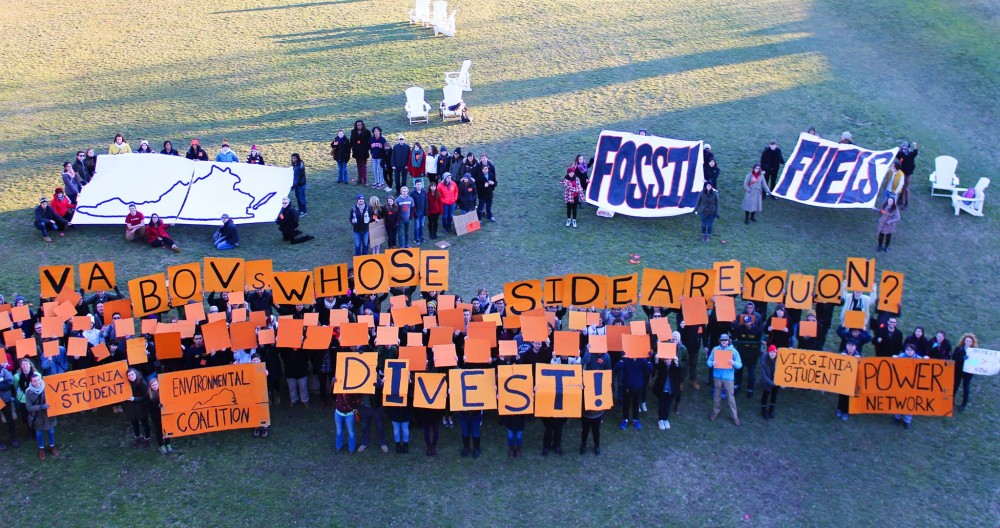
The student activists of DivestUMW worked tirelessly to secure the direct support of over 25% of the student body, the President’s Council on Sustainability, and dozens of faculty members. Last year, the Board of Visitors voted down divestment after a recommendation from the President’s Council on Sustainability. Today’s vote to divest falls on the one year anniversary of the arrest of two students and one community member as the university chose to forcibly end the students’ three-week sit in.
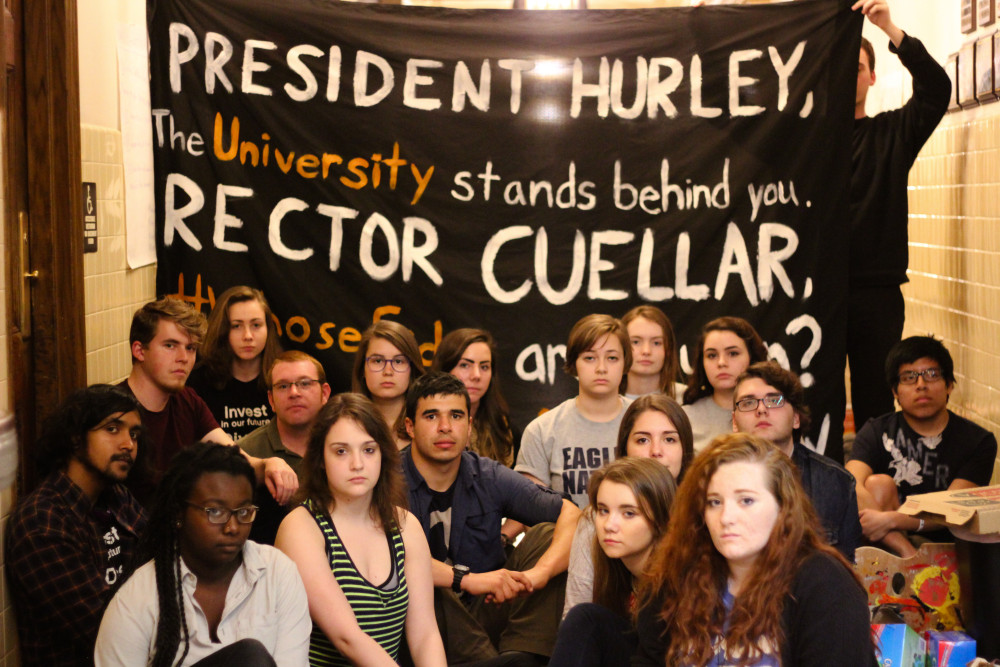
The divestment movement has sprung up on college campuses and municipalities around the globe, as a vehicle to move investment strategy in line with the moral case for combating climate change. The students from the University of Mary Washington have worked tirelessly to make this case — attending conferences, trainings, and workshops to enhance their knowledge and efficacy of their campaign. They networked with universities and activists around the globe to build their strongest possible case.
Following the vote to divest, UMW first-year student Drew Shannon said:
“The decision to divest from fossil fuels represents a rejection of the immoral activities of the industry. Companies such as Dominion Power have an unethical hold over our politics in Virginia, exploit our natural resources, and damage our environment. The University of Mary Washington’s rejection of these practices is a crucial first step in the fight towards a just transition away from this irresponsible and damaging industry.”
Sophomore Sarah Kinzer remarked:
“This decision is the result of the collective work of hundreds of students over several years. As the first Virginia university to divest, Mary Washington can now proudly call itself an ethical place to learn – one that values the lives of those affected by climate change and acts on those values.”
This decision marks a clear turning point for the Virginia climate movement, and the campus divestment movement across the south. This decision highlights the fact that public institutions are taking the threat of climate change seriously, and willing to prioritize moral obligations over short-term, harmful profits from a destructive industry.
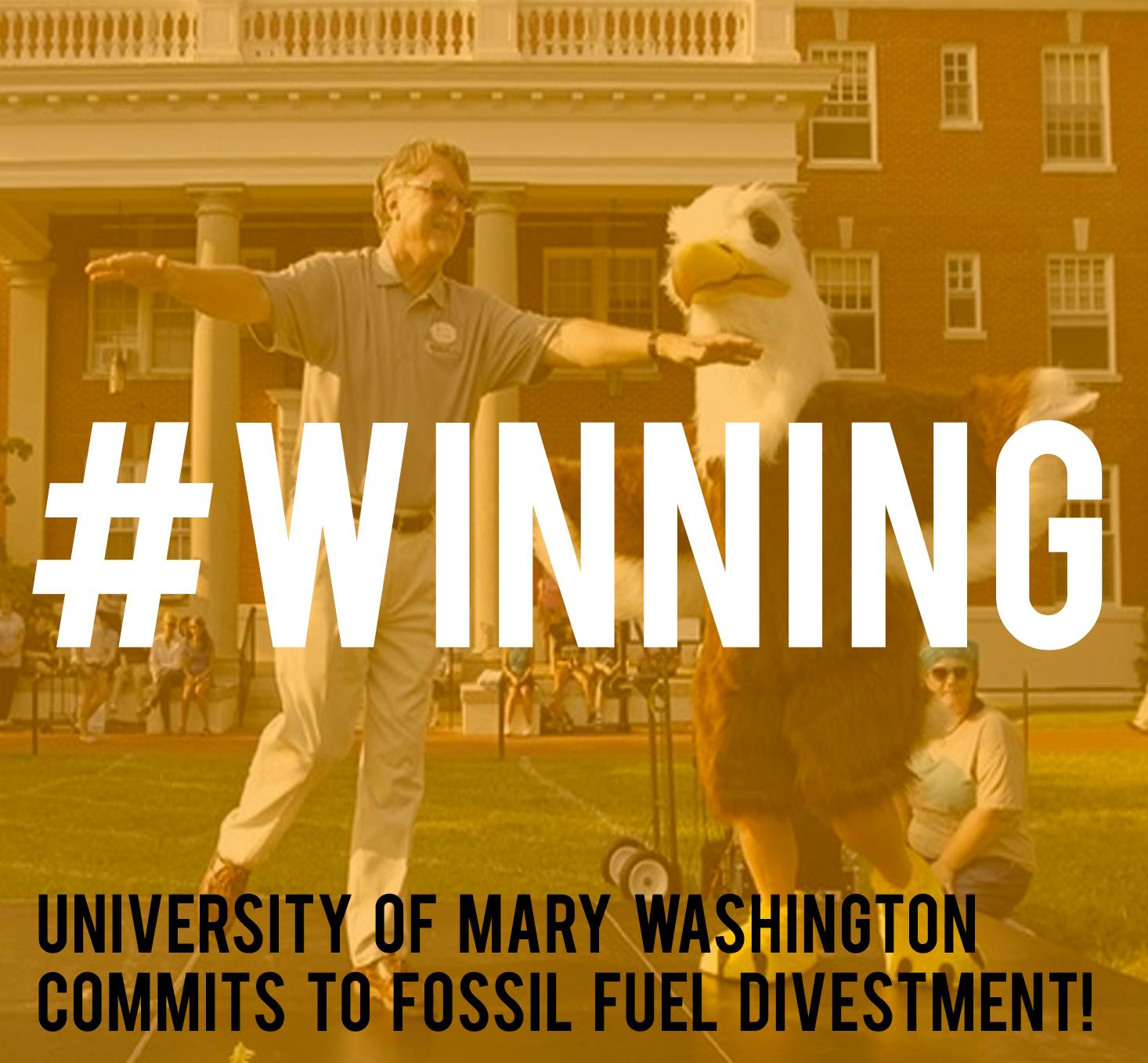
Coal Ash Stories Across Virginia
The past few months has seen fierce resistance across the state of Virginia to Dominion’s plans to dump toxic coal ash wastewater into our rivers, and then to leave the coal ash in unlined pits that could leak heavy metals into our groundwater for decades to come.
We’re angry, and rightfully so. Dominion wants to keep up with business as usual – getting what they want, when they want it. But not anymore.
Dominion has received the necessary permits from the Virginia Department of Environmental Quality to ‘dewater’ two of its four coal ash impoundments — at Possum Point along Quantico Creek and at the Bremo Station along the James River. But Dominion still needs two more wastewater dumping permits, and four permits to deal long-term with the leftover coal ash waste. We have lots of work ahead to protect our water supplies from this reckless corporation.
Over the next few weeks, we’re partnering with friends and organizations across Virginia to spread awareness of the dangers of coal ash, and root ourselves in community action moving forward.
We’re helping host a series of screenings of Coal Ash Stories, an incredible documentary series by filmmaker Rhiannon Fionn and Working Films.
Coal Ash Stories paints a picture of what life looks like in communities threatened by coal ash contamination. People are unable to drink their own water, take a bath, fish or farm without worrying about long-term health effects. These fears are already being felt by communities located near coal-fired power plants in Virginia.
We’ll watch, discuss, and plan; and we need you to be there.
Look for an event near you!
March 31st –
Alexandria, VA – 7pm – Alexandria Beatly Branch Library,
5005 Duke St., Alexandria, Va.
Click here for the Facebook event page.
April 4th –
Richmond, VA – 7:30pm – Rag & Bones Bicycle Coop
3110 W. Leigh St., Richmond, Va.
Click here for the Facebook event page.
April 5th –
Dumfries, VA – 7pm – Dumfries Triangle Rescue Squad
3800 Graham Park Rd., Dumfries, Va.
Click here for the Facebook event page.
April 20th –
Charlottesville, VA – 7pm – Jefferson-Madison Regional Library
201 E Market St, Charlottesville, VA 22902
Click here for the Facebook event page.
Chesapeake, VA – To be announced
Check out the trailer here:
Coal Ash Chronicles extended trailer from Coal Ash Chronicles on Vimeo.
It's true: Dominion dumped toxic coal ash waste into our rivers
It’s bad enough that Dominion wants to crisscross Virginia with a massive new gas pipeline and undermine federal clean power rules. But flagrantly contaminate our rivers with millions of gallons of toxic coal ash wastewater?
It’s true. News broke last week that, in May 2015, Dominion Power dumped 33.7 million gallons of untreated wastewater from its Possum Point coal plant into Quantico Creek, a tributary of the Potomac River.1
This happened eight months before Dominion received two highly controversial state permits that actually do allow the company to dump that much — plus half a billion more gallons — of coal ash wastewater into the Potomac and James Rivers.
This much is clear: Neither Dominion nor regulators at the Department of Environmental Quality (DEQ) are doing their job to protect our waters. Coal ash is a toxic byproduct of burning coal that contains arsenic, mercury, lead and other heavy metals — the last things we need in our rivers.
Last month, despite an outpouring of public opposition, DEQ and the State Water Control Board signed off on permits allowing Dominion to dump 215 million gallons of coal ash wastewater into Quantico Creek and 350 million gallons into the James River. Those permits have raised so many alarm bells that our neighboring state of Maryland, led by Republican Governor Larry Hogan, is planning a legal challenge.2
Meanwhile, for months, Dominion and the director of DEQ, David Paylor, had denied that any waste had already been drained into Quantico Creek. Thanks to the tireless efforts of the Potomac Riverkeeper Network, the truth is finally coming to light. Dominion and DEQ are now admitting that water was dumped last spring. Now they’re just saying it was all legal.3
Our friends at Potomac Riverkeeper aren’t buying it. They’ve asked the U.S. Environmental Protection Agency to launch a criminal investigation. Concerned Virginians aren’t buying it either — over 500 of us marched this weekend to “#DumpDominion,” from Dominion’s Richmond headquarters to the General Assembly building.
It’s time for Governor McAuliffe to step in. Especially on the heels of the disaster we’ve seen unfolding in Flint, Michigan, our Governor needs to do everything within his power to protect our access to clean, safe drinking water. As a testament to the threat this coal ash poses, the Virginia Tech professor credited with uncovering the disaster in Flint has agreed to help monitor potential coal ash leakage near another one of Dominion’s coal-burning power plants, in Dutch Gap.4
Pending an EPA investigation, potential legal challenges, and so many unanswered questions, Dominion has no business dumping more coal ash waste into the rivers Virginians rely on for our drinking water, recreation, and livelihoods.
Governor McAuliffe is responsible for protecting Virginians. Let’s make sure we remind him.
Sources:
1. InsideNova: “EXCLUSIVE: Dominion released millions of gallons of coal-ash water.” Feb. 8, 2016.
2. Washington Post: “Maryland to fight utility’s plan to release treated waste into Va. creek.” Feb. 15, 2016.
3. Think Progress: “Utility dumps over 30 million gallons of coal waste water into Va. creek.” Feb. 12, 2016.
4. Chesterfield Observer: “Local group taps renowned professor in coal ash fight.” Feb. 17, 2016.
If you want more information, here’s what we know happened at Quantico Creek so far:
On June 18th, 2015, the Potomac Riverkeepers Network conducted a flyover of Dominion’s Possum Point Power Plant coal ash ponds to find one completely drained, with a “pumping mechanism, pipes, and lighting [presumably to do their dumping at night],” adjacent to the empty pond. The group immediately contacted DEQ to alert them to the issue. A day later, DEQ Director David Paylor responded: “No water from Pond E was discharged into state waters,” said Director Paylor.
In October 2015, Dominion submitted additional information to DEQ regarding the ponds. Contained within this information was a document from GAI Consulting, a Dominion subcontractor, which indicated that “water stored in Pond E [the drained storage pond] was discharged into Quantico Creek in May of 2015.”
At a State Water Control Board meeting in January of 2016 — the same meeting at which Dominion received controversial permits to drain ponds at Possum Point and another facility — the Potomac Riverkeepers Network again asked DEQ to go on record about the issue, and to acknowledge whether the agency knew about the draining of the pond. The Riverkeepers didn’t get a response, and the chairman of the Water Board did not demand an answer.
But on February 8th, InsideNOVA published an exclusive story confirming the rumors, reporting that a representative for the utility had confirmed that the dump happened last May. DEQ and Dominion are now claiming that the discharge, which was supposed to have never happened, was in fact legal.
Momentum building against Virginia pipelines
A year and a half ago when Governor McAuliffe and Dominion CEO Tom Farrell unveiled their plans for the Atlantic Coast Pipeline, I was scared. Shortly thereafter, three more proposals for mega pipelines came forward – I was really scared.
Virginia was in the crosshairs of the fossil fuel industry, but over the last year we’ve built something. And dare I say it, we’re heading into 2016 with momentum.
Over the past few months we have racked up victories.
The US Forest Service has proven to be a staunch ally. In October they asked Dominion to reroute the Atlantic Coast Pipeline to avoid the endangered Cow Knob Salamander. A month later, they flatly rejected the current proposed route. They cited unavoidable environmental damages, dealing an enormous setback to Dominion’s plans. Considering the original route took almost a year to design before submittal to FERC, one can only guess as to how long it will take to design a reroute.
Further exemplifying the shoddiness with which Dominion has approached this process, the US Forest Service blasted Dominion for misrepresenting their soil samples. The US Forest Service thoroughly documented the instructions they gave to Dominion. Not only did their soil surveying team disregard instruction after instruction, they falsely presented the credentials of the sampling team. The US Forest Service publicly lambasted them for their complete disregard of protocol and demanded the samples be disregarded.
As this reckless planning has become more evident, the need to slow down and thoroughly plan this project has become increasingly apparent. More than a dozen legislators have written to the Federal Energy Regulatory Commission requesting they conduct a Programmatic Environmental Impact Statement (PEIS). This would require FERC to examine all pipeline proposals in a regional, comprehensive manner. Virginia Democrats and Republicans at all levels of state and federal government have now written to FERC demanding a PEIS. And just last week, the Roanoke Times editorialized on the need for a PEIS as well.
Legislators on both sides of the aisles have introduced bills this General Assembly session to curtail the effects of these pipelines. And why unfortunately they don’t have authority to stop the pipeline, it’s a good step forward, and we’re fighting everyday to get them passed. To get involved in lobbying for these bills, email me at Drew@chesapeakeclimate.org.
We’re going to keep the momentum going through 2016.
Residents of Buckingham Say NO to Proposed Compressor Station
This is a guest post from Virginia Atlantic Coast Pipeline Fellow, Nqobile Mthethwa, you can reach her at NqobileM@chesapeakeclimate.org.
Over 50 people gathered at the Frances Redwood Center on July 22nd to discuss the proposed Atlantic Coast Pipeline and Compressor Station in Buckingham County. The seminar was a joint effort by Friends of Buckingham, Chesapeake Climate Action Network and Yogaville Environmental Solutions. This seminar was presented to the annual session of the United Baptist Association of Central Virginia.
The presentation gave an overview of the proposed 550 mile and 42 inch Atlantic Coast pipeline and the rush for natural gas in the eastern region of the United States. Friends of Buckingham member Kenda Hanuman presented the dangers of compressor stations and what the proposed Buckingham station would mean for the community. Concerns ranging from toxic emissions, land rights, noise and light disturbances, and the creation of only 2 full time jobs from the station were all discussed.
Following the presentation, community members engaged by firing off questions about the proposed pipeline and compressor station. People were concerned how noise levels that accompany this type of infrastructure would affect sleep in this rural community. Many had pointed questions about the elderly people of Buckingham with compromised health issues including respiratory conditions. The elderly fear their lack of mobility could be detrimental in the event of leaks and explosions.

Many people had questions about the economics, specifically the outsourcing of jobs to out of state workers, the loss of land and depreciation of its value, and supposed tax benefits gained by the people of Buckingham being outweighed by health/environmental costs. Especially concerning was the difficulty of tapping into the gas to be used by Buckingham. Right now, if a county or business wanted to use gas from the pipeline, it would cost $5 – 8 million to ‘tap’ the line.
Citizens are troubled with the way Dominion is forcing their way onto private property by lawsuits against innocent citizens. Many people’s families have lived in Buckingham for hundreds of years. Dominion is willing to compromise the health and livelihood of Buckingham citizens for empty promises of cheap natural gas and economic benefits.
The general consensus among attendees was there is no benefit to Buckingham citizens or anyone else in the pipeline path, there are only costs to health, community and the environment. Further, they saw that natural gas isn’t a sustainable source of energy because the effects of climate change are predicted to get worse with the continued use of fossil fuels.
The more people learn about this project, the more people turn against the ACP. We see citizens of all faiths and regions in Virginia are standing together in opposition to the Atlantic Coast Pipeline and compressor station. Like the folks in Buckingham, people across Virginia have been and will continue to build coalitions to resist every point of the destructive proposed pipeline and compressor station. The Buckingham meeting has reaffirmed the belief that “Organized people will always win over organized money.”
A busy spring for Virginia students

As the semester winds down and finals week ominously approaches, you might see a slight lull in Virginia student activism. Trust me, it won’t last long. But while students are studying, I thought I would recap the semester with some of the incredible highlights pulled off since January by the Virginia Student Environmental Coalition.
Students roared out of the gate in 2015, putting on the annual January VSEC Convergence before the semester even started. Sixty-five students from around the state came down to Richmond, Virginia for a weekend full of trainings on lobbying and Virginia policy. On MLK Day, they marched to meet Virginia’s Deputy Secretary of Natural Resources Evan Feinman, where they delivered 178 hand written letters opposing the Atlantic Coast Pipeline. Following the march, they descended upon the Virginia General Assembly, where they met and lobbied thirteen state delegates and senators on the Virginia Coastal Protection Act.

Three weeks after flexing their political muscles at the Capitol, VSEC was at it again in Fredericksburg at the University of Mary Washington putting on Virginia Power Shift 2015. This time more than 350 students gathered from across the state to discuss building student power, the intersectionality of our movements, and how we can make serious change in Virginia.
The first Virginia Power Shift in 2014 had 125 attendees, and ten short months later Virginia Power Shift 2015 almost tripled that number. A true testament to the growth of student activism in Virginia.
You’d think after Power Shift things would have cooled off for a bit. Wrong. Recharged and reinvigorated, dozens of VSEC students spent their spring breaks’ in the mountains of south west Virginia at Mountain Justice Spring Break. MJSB is a week long action camp centered around combating mountain top removal mining and fracking in Appalachia.

In late March, students at the University of Mary Washington began a 20 day sit-in of their President’s office demanding a subcommittee be formed to study the prospect of divestment. The sit-in ran peacefully for almost three weeks until the administration had state troopers remove students from their occupation, arresting two. The arrests sparked a flurry of action across the state and amplified the energy surrounding divestment in Virginia. There have been at least 5 divestment campaigns launched within the past month capitalizing on the recent momentum.
The Divest UMW sit-in fell within a larger wave of student divestment sit-ins that swept the nation, happening at schools such as Harvard, Yale, Tulane, Colorado University, Swarthmore and Wesleyan. Divest UMW students helped lead the way and provided experience and support to other schools beginning their sit-in.

Virginia students prefer to end on a bang, not a whimper. In two weeks you will find them closing out the semester with a group of more than thirty students riding their bikes across Virginia.They’ll be following the route of the proposed Atlantic Coast Pipeline to help reinforce local resistance and grow the opposition. The ride will take 10 days and will take students from the mountains of Highland County to the coast of Virginia Beach. Each night students will meet with community members and learn their stories. The ride is used as a tool to draw attention to these stories and raise awareness of the dangers of this proposed pipeline.
The Virginia Student Environmental Coalition has had an inspiring semester of action, growth, and new possibilities. New alliances and friendships were formed. Power was built. And the horizons were broadened. The students of Virginia are ready to carry their success forward and change the course of Virginia for the better.
Divest University of Mary Washington Sit-In Reaches Day 14
 Hour 320. That is how long students at the University of Mary Washington have sat in their President’s office for serious action on Divestment. It is day 14 of their sit-in and the Rector of their Board of Visitors, Holly Cuellar, has still not spoken with her students.
Hour 320. That is how long students at the University of Mary Washington have sat in their President’s office for serious action on Divestment. It is day 14 of their sit-in and the Rector of their Board of Visitors, Holly Cuellar, has still not spoken with her students.
Divest UMW launched their sit-in almost two weeks ago, on March 26th. Since then, over 150 people, including students, faculty, religious leaders, and politicians have joined the sit-in. The students began this historic act of civil disobedience after Rector Holly Cuellar chose to silence their voices by rejecting their requests for a subcommittee to merely study the possibility of divesting their endowment from coal. This rejection came after a 2 year campaign during which 25% of the student body, 33% of faculty, and even the President himself, supported the creation of the subcommittee. After a presentation by Divest UMW members to the board, Rector Cuellar read a prepared statement thanking them and closing the issue. When students attempted to discuss the issue with her after the meeting, their questions were not answered and Rector Cuellar fled the scene.
Students had no choice but to resort to sitting-in for their voices to be heard. The Board of Visitors had not even deliberated their proposal, as Rector Cuellar ended the discussion without a vote.
Day 1 of the sit-in, 18 students poured into George Washington Hall. I found myself fortunate enough to be one of them. Throughout the day I witnessed an administration that was friendly towards the students, but hesitant. They clearly had not anticipated this when they made their way into work that morning. Students communicated with the administration throughout the day, and both parties were respectful of one another.

That evening, there was a lecture series held in the auditorium across from where the students were occupying. Theresa Crawley, a member of the Board of Visitors, was in attendance. Two students went to engage her in conversation, so as to explain how powerless they felt that they had to begin the sit-in. As the conversation developed, several things became clear:
- Mrs. Crawley actually had no idea what divestment was, despite sitting through several presentations by students to their Board of Visitors.
- Mrs. Crawley does not believe in global warming, and asked one of the students if they had ever attended a science class before.
The conversation ended after Mrs. Crawley, becoming noticeably frustrated, told the students they were being ‘pests,’ and subsequently withdrew herself from discussion. This begs the question of Mrs. Crawley: if you view genuine student passion and engagement over issues as being a ‘pest,’ why are you in higher education?

It seems as if Cuellar and Crawley’s reluctance to investigate divestment has less to do with their opposition to the cause, but rather their unwillingness to appear to have ‘lost’ to students. They fail to accept the possibility that the students aren’t fighting to ‘win’ against their administration. They are fighting for their futures.
If anything, Mrs. Crawley’s insult has only continued to fuel the students’ commitment to their cause, as 14 days later they are still camped out in George Washington Hall. They continue to be joined by students, faculty, and alumni. From candidates for the Virginia Senate to Reverend Lennox Yearwood of the Hip Hop Caucus joining the sit-in, support continues to swell. The community continues to bring them food, and professors are responding to emails excusing their absences and urging them to remain steadfast!
Students will continue to sit until their Board of Visitors shows they are interested in the opinions of the students for which they make decisions. If they don’t, President Hurley can expect to find a group of dedicated students quietly doing their schoolwork every morning he walks into his office.
You can follow the Divest UMW campaign on Facebook and Twitter, and on their website: https://divestumw.wordpress.com/
Virginia Power Shift
The youth of Virginia are ready to turn up. They are ready to bring it squarely to the jaw of the fossil fuel polluters. I know this because 350 students showed up in Fredericksburg, Virginia in February for Virginia Power Shift 2015. They chose to spend their Valentine’s Day weekend rallying for Global Divestment Day & building a loving movement, and that is why I know we will win.

Looking back just 10 short months ago, when Virginia Power Shift 2014 drew in about 150 attendees. Or a little farther back to Virginia Power Shift 2011, which played host to fairly similar numbers as 2014. While correlation may not be causation, I’m going to declare that the Virginia youth climate movement is growing. It is growing fast. And if I made my money by intentionally dumping greenhouse gasses into the atmosphere, I would be shifting uncomfortably in my seat right now.
Virginia Power Shift was kicked off by an action in tune with Global Divestment Day meant to elevate the noise of the Divest UMW’s (University of Mary Washington) divestment campaign one week before they met with their Board of Visitors. Over 200 students marched across the campus cheering “Hey BOV, Listen to me, We want to be – fossil free!” and “Show me what democracy looks like,” before lining up to take a few aerial shots.
Later that evening, students were invited to participate in an open mic event facilitated by Good Clear Sound, an award winning slam poetry group from Virginia Commonwealth University. I never knew it was possible to feel that intimately connected with a room full of hundreds of strangers. Originally slated to end at 10 pm, the event ran until 11 pm as the flood of students eager to share their stories never relented to dry up. They shared really personal and inspired stories touching on issues such as gender identity, racial discrimination, sexual orientation and how their lives have been shaped. Music was performed, poetry was read, and laughs were had. It undeniably helped shape the weekend from a convergence into a genuinely inclusive community.
Saturday kicked off with a convergence wide training on systems of power and anti-oppression. No small task when you’ve got a room filled with more than 300 students!

(Thanks to our awesome facilitators who willingly chose to develop and facilitate an anti-oppression training for 300 people!)
The rest of the day was a blur of workshops, trainings, and panels on topics from fighting fracking to Black Lives Matter organizing, from food justice to direct action training to queer organizing in the south. The halls were buzzing with new ideas, friendships, and energy.
Saturday evening capped off with two standing-ovation drawing keynotes from Elise Keaton and Reverend Lennox Yearwood. Elise Keaton lives in West Virginia and has spent her life fighting mountain top removal mining and new fracked gas pipeline expansions. Reverend Yearwood is the founder of the Hip Hop Caucus to engage hip hop’s political and social voice. I won’t capture a fraction of their eloquence, and I don’t intend to not do justice to their words by trying to reiterate their keynote addresses. I can tell you both of them left the crowd on their feet screaming for more. At the end of their talks students were hugging, jumping, and cheering. The room was electric, the energy was tangible, and the students were ready to forge the future right then and there.
Sunday, we dug in. We took the energy and the knowledge gained over the weekend and funneled it into a strategic plan for the year. The Virginia Student Environmental Coalition is ready to jump into the next level of its organizing capacity, and after what happened in Fredericksburg I don’t think anyone would doubt the likelihood of that happening. Dominion, we’re coming for you.



